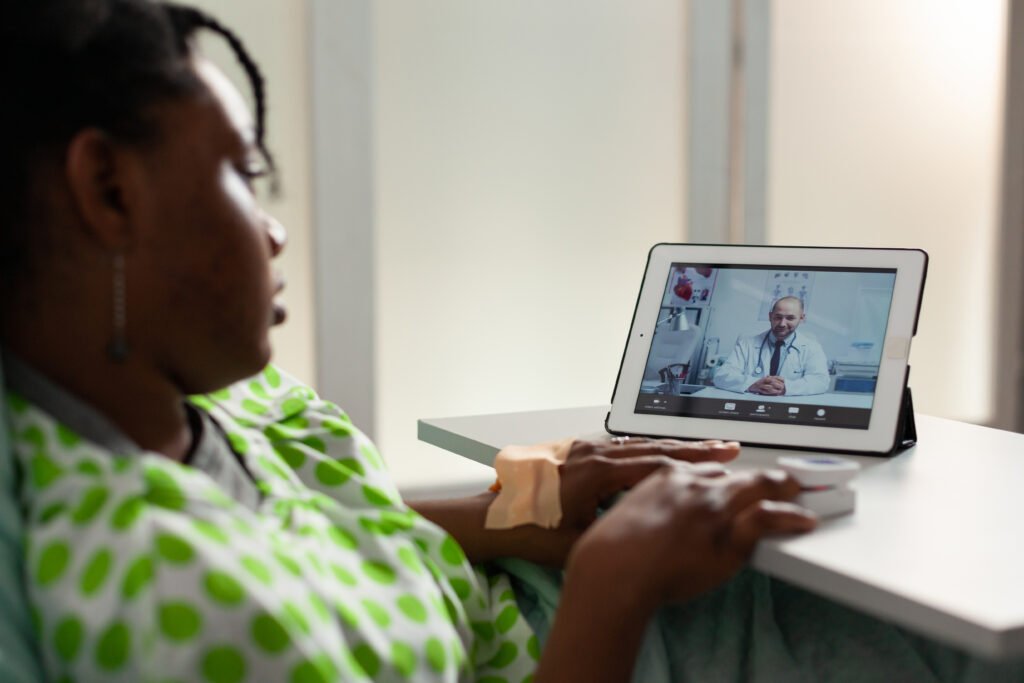Misdiagnosing: A Barrier Between Advocacy and Proper Care for Women
Tiffany Chow
October 2025
Women’s Health
The upkeep of one’s health, particularly for women, can be unnecessarily difficult at times. A simple check-up or yearly pap smear can unexpectedly become a nightmare for some women. Although there are a multitude of exams, screenings, and appointments to further women’s health, there seems to be a crumbling foundation waiting to break.

Misdiagnosing
A diagnosis can hopefully lead to a form of treatment and prevent the spread of disease, but diagnosing conditions can be difficult, especially when time is of the essence.[1] Yet, the prevalence of misdiagnosis is significantly higher for women. In a survey tracking the number of men and women who had received a misdiagnosis in the past 2 years, more than 50% of respondents were women.[2] Alongside the many barriers to receiving healthcare, such as insurance costs, expensive care, and accessibility to quality care, women tend to face further difficulties involving misdiagnosis.
From a clinical perspective, the prevalence of misdiagnosing women stems from the overall lack of knowledge regarding conditions that pertain more to women, as well as teaching methods that prioritize treatment for conditions that present themselves in males.[1] The outcome is a lack of quality care for women due to systemic differences already set into place by medical education, as well as current practices of hospitals and providers.
From a societal perspective, misdiagnosis raises concerns over inequality, insensitivity towards women, and the negative stigma that arises as a result of such differences. It is known that symptoms can present differently amongst individuals and sexes. Too often, women are dismissed for their concerns, being called dramatic when, more times than not, their symptoms are real and bothersome.[3]
Advocacy
With systemic differences widening the barrier between proper care and seeking treatment for women, engaging in substantial acts of advocacy can be empowering. As reproductive care is fundamental to women’s health, there are ways to provide support in getting sufficient care. For example, Planned Parenthood has many opportunities to engage and support the cause alongside a community of like-minded people.
Another opportunity is the March of Dimes, where participants walk to support all mothers throughout pregnancy. The walk is empowering as many walk as proof of their unwavering support. Funds are raised to call for better resources that prioritize the well-being of mothers and their babies.
While advocacy is important for change, many of the barriers between patients and doctors are systemic ones. As providers, many health professionals receive the brunt of those impacts on patients. Therefore, it can be helpful to have informed discussions with doctors about treatment and conditions. By doing so, this is a form of self-advocacy that can be very effective in maintaining a positive relationship between doctors and patients. Some questions include:[3]
- What are all of the treatment options available?
- Why are you recommending this particular plan of care?
- Why am I not being offered this treatment option?
- What else could this be, beyond mental health or anxiety?
Raising Awareness of Under-Researched Conditions
Alongside the need to advocate for better care, it is also important to raise awareness of conditions amongst the greater community and practicing physicians. Many conditions that impact women, ranging from chronic illnesses to reproductive conditions, have not been researched enough. From providing treatment for symptoms presented in the male body, to the lack of understanding of female-specific symptoms, there needs to be more research focused on how conditions present themselves in women, and the prevalence of conditions in females specifically.[4]
With research itself, there is a constant battle with censorship. Although many female-oriented conditions are heavily under-researched, the growing list of banned words for writing research grants has included both ‘female’ and ‘women’. This adds to the systemic barriers that continue to act as a divide between quality care and women’s health.
Yet, with growing efforts to initiate research on these conditions, we can begin to not only reverse misdiagnosing amongst women, but also to understand women biologically and from a societal perspective. For example, early life experiences and environmental factors can increase the risk of developing chronic conditions in women, as well as the onset of menstruation and fluctuations in hormones.[4] By simply acknowledging these initiatives, we are making these prevalent issues relevant and talked about.
References
[1] Sun T., et al. (2023) Large-scale characterization of gender differences in diagnosis prevalence and time to diagnosis. MedRxiv (Cold Spring Harbor Laboratory). https://doi.org/10.1101/2023.10.12.23296976
[2] McGovern G., (2024) Survey: Women More Likely to Receive Misdiagnoses and Unsatisfactory or Poor-Quality Care. Pharmacy Times. https://www.pharmacytimes.com/view/survey-women-more-likely-to-receive-misdiagnoses-and-unsatisfactory-or-poor-quality-care
[3] (2025) Breaking the silence: How women can advocate for their health | CWRU Newsroom | Case Western Reserve University. CWRU Newsroom (Case Western Reserve University). https://case.edu/news/breaking-silence-how-women-can-advocate-their-health
[4] (2024) Significant Lack of Data and Research on Chronic Conditions Affecting Women Is Hindering Diagnosis, Treatment, and Prevention; Report Calls for Enhanced NIH Research Effort. (Nationalacademies.org). https://www.nationalacademies.org/news/2024/07/significant-lack-of-data-and-research-on-chronic-conditions-affecting-women-is-hindering-diagnosis-treatment-and-prevention-report-calls-for-enhanced-nih-research-effort









